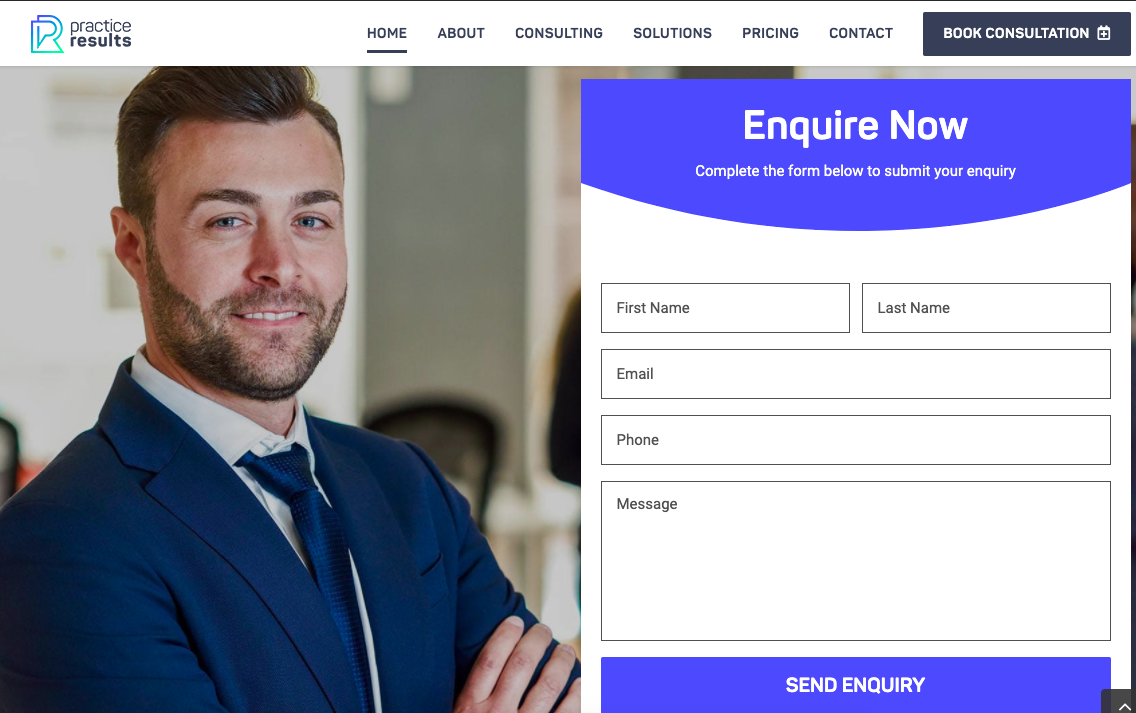How to Start a Conversation and Generate Leads with an “Enquire Now” Form
It all starts with ‘Hello’. Your website is like a reception area to your future clients or patients.
1. Start with an Enquiry Form
Start a new client relationship the right way with a landing page and a digital form.
An enquiry form is important for three reasons:

A digital enquiry form ensures your patient’s information is securely stored, the mandatory fields get filled and the data collected will tell you where and how they found your business listing.
2. Filter the Good from the Bad by Qualifying Leads
Great service is a two-way street. Sometimes your services are not for some clients or patients and sometimes their enquiries are not within your services.
A qualifier is like a short questionnaire for prospective leads to fill in after their enquiry. It is a great way to get down to the nitty gritty, avoid the unnecessary back and forth and really drill down to finding the right customer base for your business.
In the recent COVID-19 experience we know that digital relationships can be even more time-consuming if you don’t put limitations in place.
Encourage the client or patient to answer Who, What, Where, When and Why. This allows you to understand their expectation from you, how it relates to their issue and from there builds a foundation for the relationship – all before the first consultation.
Some questions we recommend adding to your survey:
3. Make your Initial Consult a Virtual Consultation
So you’ve got their details. You’ve found out that their needs fall within your services.
Step 3 is a face-to-face meeting.
Why not save your time and their time by creating a video format consultation?
Reduced administration in initial consults is always a bonus. With video format you can get your file notes in place and develop an action plan, all while reducing time constraints and the waiting room numbers.
In Alexei’s recent webinar, he talks about the rise of the virtual consultation. As the world moves to digital communication, it’s time to prepare your practice for the virtual consultation.
For health professionals telehealth consultations have had a billion dollar stimulus package. For other professionals, the long-lasting implications of the investment by the government and other institutions is likely to improve remote connectivity for good.
With these tools, we’re sure that you will be starting your client relationship on the best foot.
If you would like more information on how you can tailor your offerings to the ideal client and patients, please get in touch.







Leave a Reply